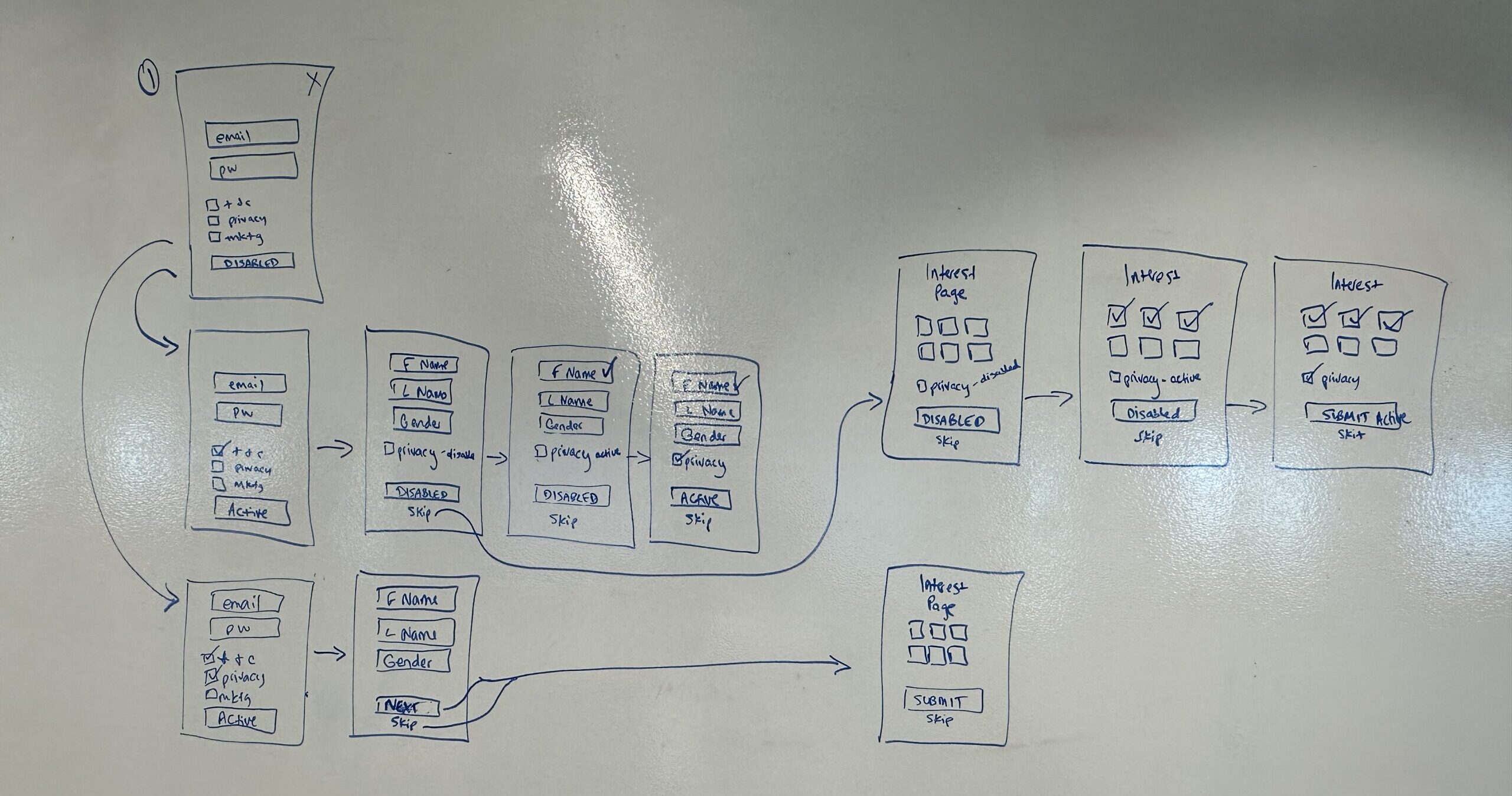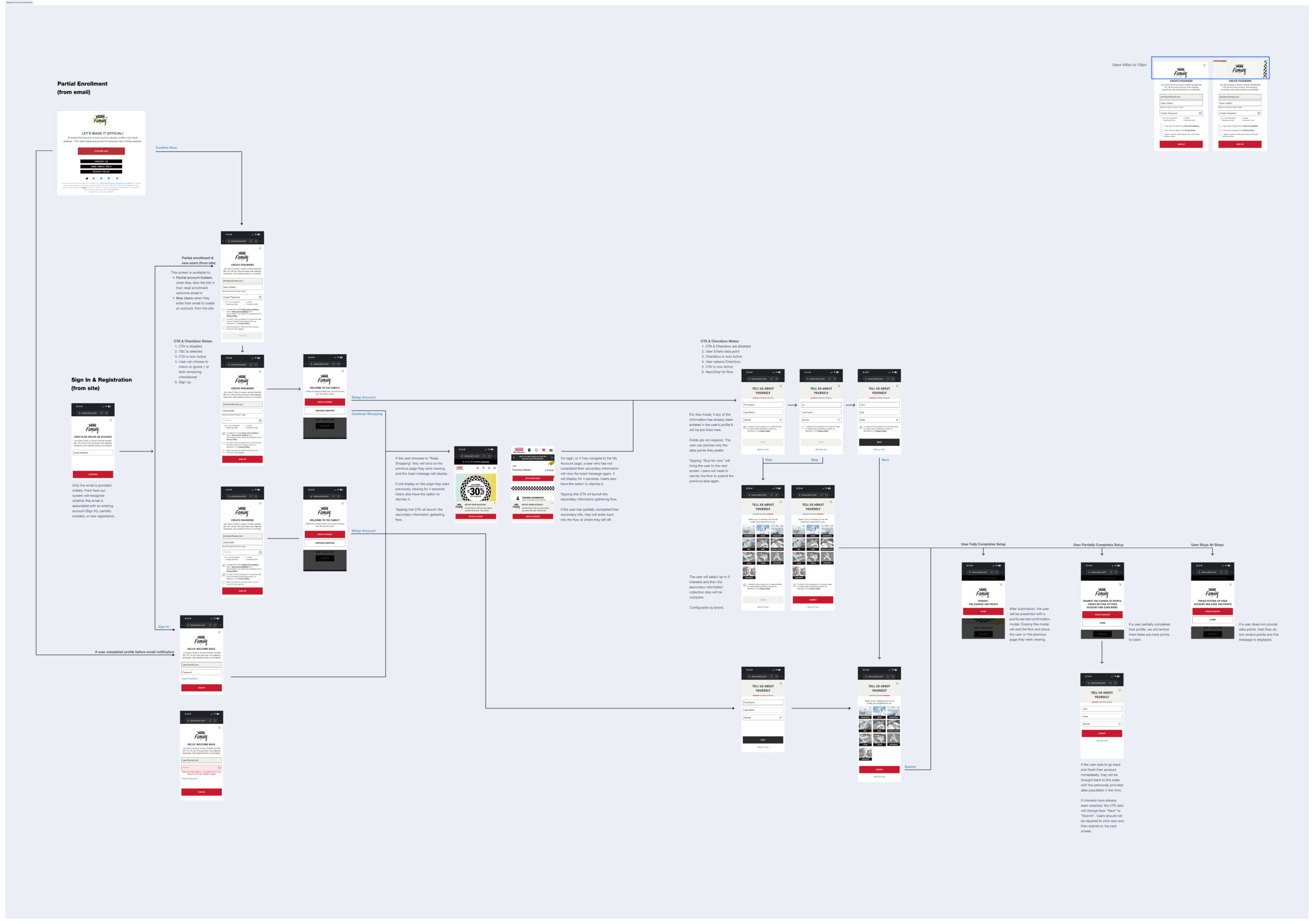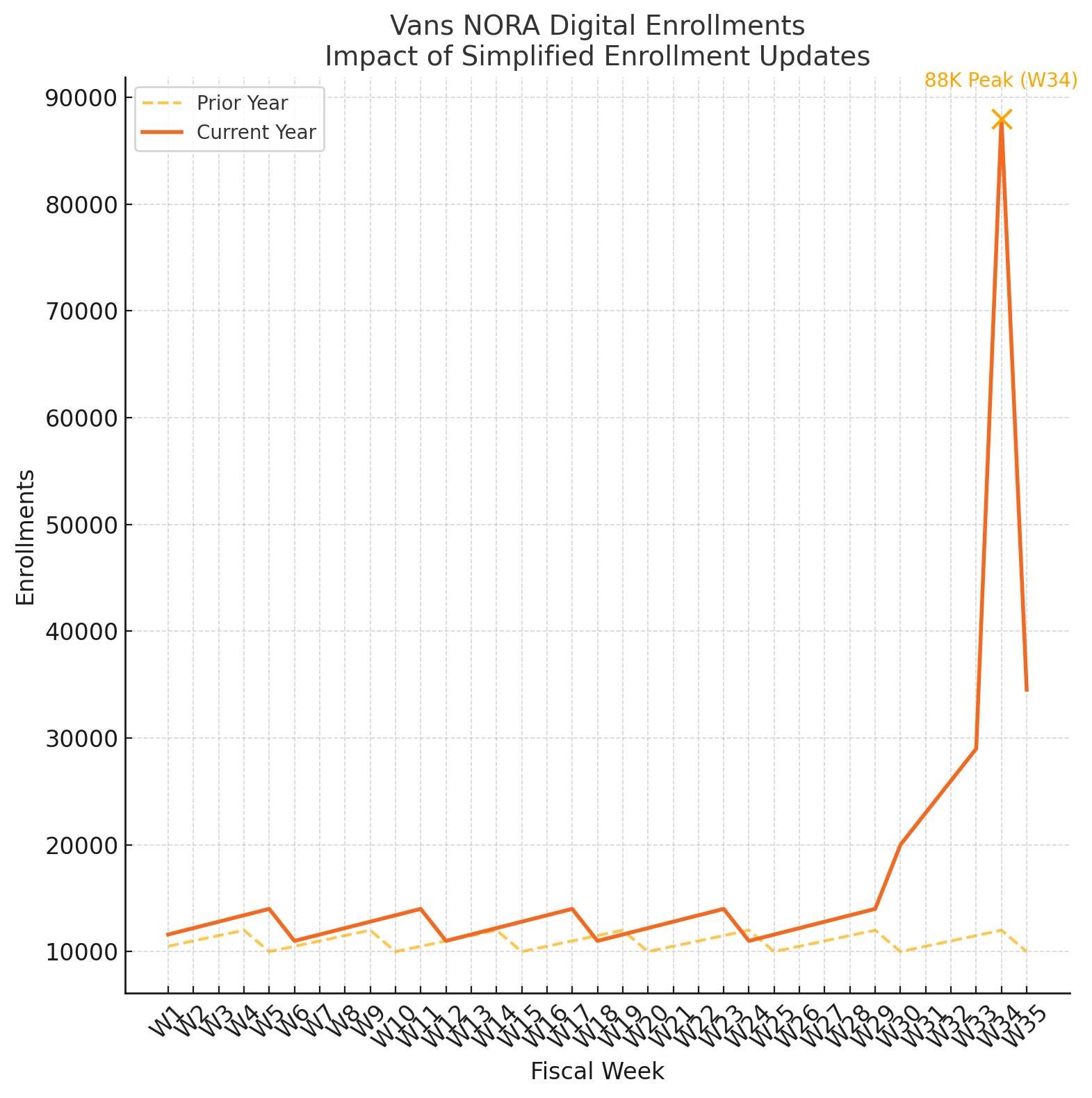Overview
Vans, A global brand, aimed to streamline their loyalty program (Vans Family) registration process across its EMEA and NORA regions. The goal was to ensure a consistent experience while adhering to regional legal constraints and platform capabilities. Personalization played a key role in optimizing the experience, ensuring that users received relevant, engaging interactions tailored to their behaviors and preferences.
For this project I designed user flows, wireframes and enrollment UI elements in the design systems. These user flows touched on various points in the customer journey including in-store scenarios.
According to the Nielsen Norman Group, a user flow is defined as:
“A set of interactions that describe the typical or ideal set of steps needed to accomplish a common task performed with a product.”


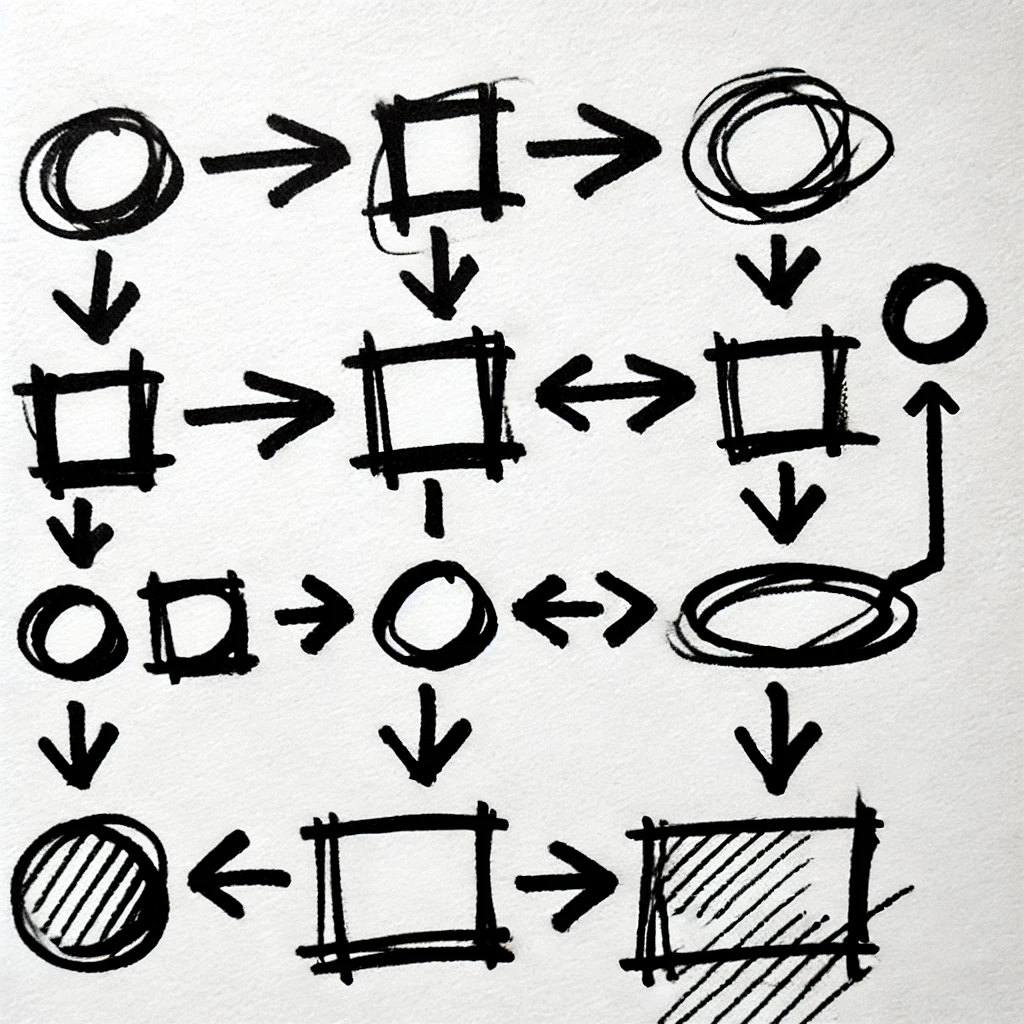
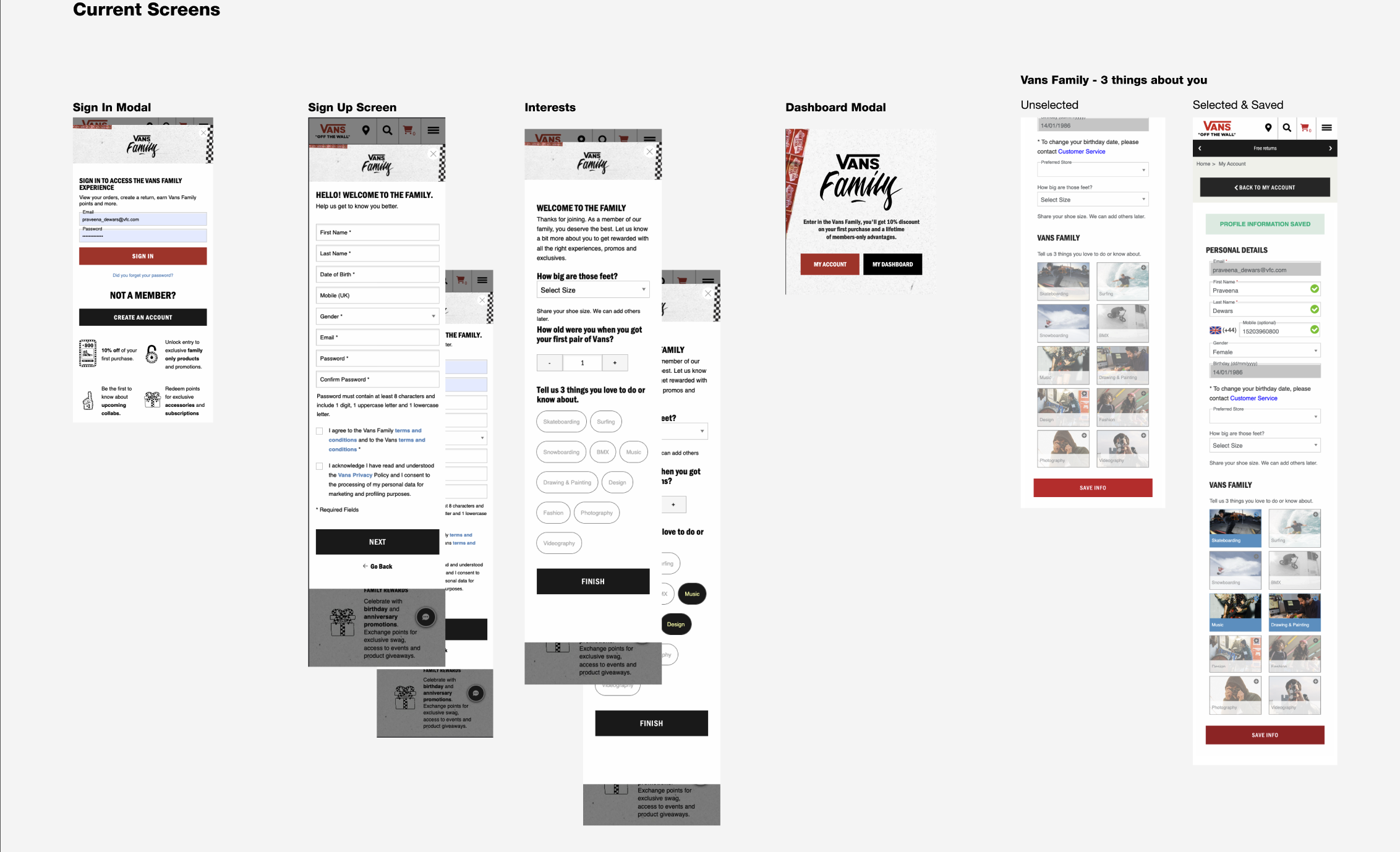 The existing loyalty program suffered from high abandonment during signup, inconsistent flows across regions, and unclear rewards. To solve this, I led a 3-phase UX process:
The existing loyalty program suffered from high abandonment during signup, inconsistent flows across regions, and unclear rewards. To solve this, I led a 3-phase UX process: